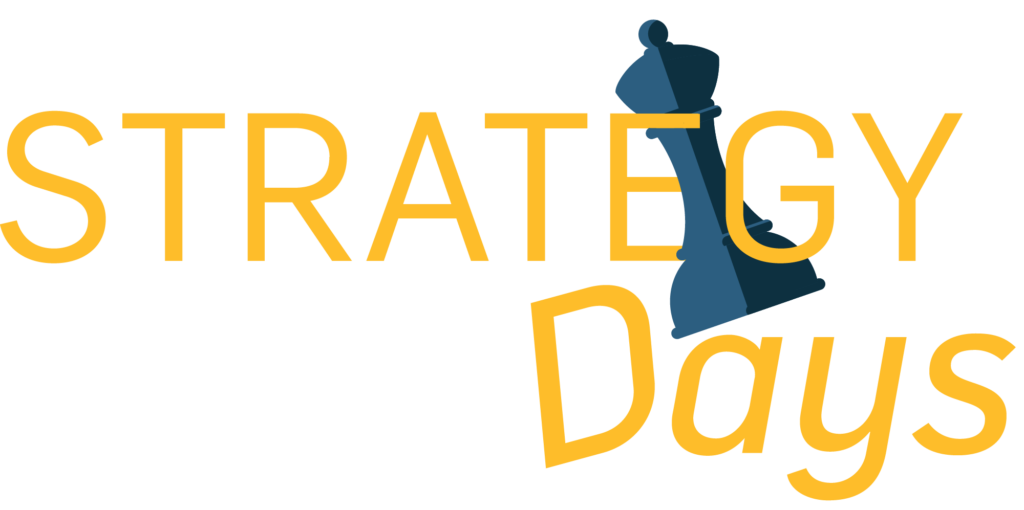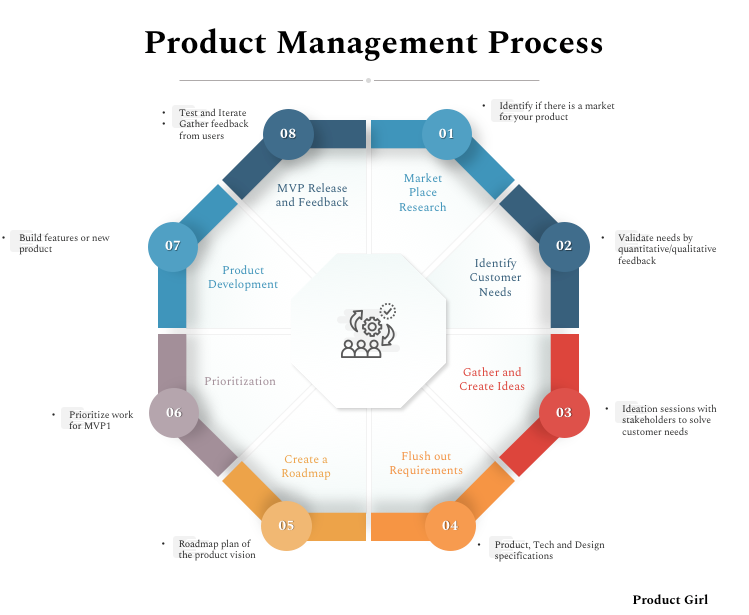At the heart of effective leadership lies a crucial transition: from simply navigating existing processes to actively shaping them. This becomes the key to establishing organizational excellence. When moving into a leadership role, the focus shifts from execution within established structures to designing those structures themselves. This shift in responsibility marks a pivotal moment, where individuals take on the critical task of crafting the frameworks that guide organizational efficiency, optimize team performance, and propel the entire operation towards its goals.

Creating a Healthy Team Culture
Can a team be more than just the sum of its parts? Absolutely. The secret lies in creating a robust culture where individuals thrive and connect. In today's dynamic business landscape, competitive advantage lies not just in products or services, but in the very fabric of the culture of an organization. A healthy team culture forms the foundation upon which collaboration thrives, productivity soars, and employee engagement takes flight.
Building a Healthy Team Culture:
- Open Communication: Promote transparency, encourage active listening, and create safe spaces for feedback and discussion.
- Empowered Innovation: Nurture creativity, support diverse perspectives, and celebrate experimentation and risk-taking.
- Mutual Respect and Trust: Build a foundation of trust, value individual contributions, and treat everyone with dignity and fairness.
- Growth Opportunities: Provide access to learning and development resources, encourage skill-building, and support career aspirations.
- Recognition and Appreciation: Celebrate achievements, acknowledge hard work, and offer regular feedback to boost morale and motivation.
- Resilience and Adaptability: Foster a collaborative approach to challenges, build problem-solving skills, and encourage learning from setbacks.
While there may be hurdles and conflict at times, focus on resolving issues constructively and moving forward as a unit. Model the behaviors you wish to see in others like accountability, compassion, integrity, and courage. A healthy culture starts from the top down, so lead by example in developing a safe space for your team members to share ideas, ask questions, and perform their best work collectively towards the shared goals and vision.
Give your team the tools and resources they need to succeed
As a manager, ensuring your team has the necessary resources for success is key to smooth operations. Evaluate if your team is adequately staffed to hit targets or if they need additional members to meet metrics. Provide ongoing learning through virtual and on-site training sessions to develop their skills. Enable focused work time without interruptions so they can achieve flow state productivity rather than constantly context switching.
Verify collaboration from cross-functional groups is effective so your team gets what they need. Make sure they take sufficient time off to relax and recharge. Keeping a pulse on these aspects demonstrates you care about both their performance and well-being. Equipping your team properly empowers them to excel now while enhancing enthusiasm, morale and tenure in the long run.
Ideation Sessions
Regularly scheduled ideation sessions offer valuable benefits for product, design, and engineering teams. These sessions break down the silos between departments and enhance collaboration, allowing diverse perspectives to come together and spark innovative solutions. By stepping outside the daily routine and exploring "blue sky"opportunities, teams can uncover hidden potential and chart exciting future directions.
These collaborative brainstorming sessions not only stimulate creativity and boost morale but, also provide a refreshing break from the usual grind, allowing team members to contribute beyond their usual roles.
Ideation sessions bring a wealth of benefits to teams. Here are some key advantages:
- Inspires Creativity and Innovation: Ideation sessions provide a structured yet open environment for creative thinking. This encourages the generation of novel ideas and solutions that might not emerge in a more conventional meeting setting.
- Cross-Functional Collaboration: These sessions bring together individuals from different departments or areas of expertise. This diversity of perspectives can lead to more comprehensive and innovative solutions than those developed within a single department.
- Breaking Down Silos: Regular ideation meetings help to break down the barriers between different teams or departments. This can improve communication and understanding across the organization.
- Employee Engagement and Morale: Participating in ideation sessions can be a refreshing change from daily tasks. It allows employees to engage in creative processes, which can boost morale and job satisfaction.
- Problem-Solving: With a focus on creative and out-of-the-box thinking, ideation sessions are effective in addressing complex problems or challenges that might be difficult to solve through traditional methods.
- Discovering Hidden Potential: These sessions can reveal skills or ideas from team members that might not be apparent in their regular roles. This can lead to personal development and a better understanding of the team's capabilities.
- Encouraging Risk-Taking and Experimentation: Ideation sessions often create a safe space for risk-taking and experimentation, vital for innovation.
- Aligning Teams on Goals and Vision: By engaging in collective brainstorming, teams can align more closely on the organization's goals and vision, leading to more cohesive efforts in project development.
- Increasing Adaptability: Regular ideation encourages a mindset of continuous improvement and adaptability, which is crucial in fast-paced or rapidly changing industries.
- Product and Service Improvement: Ideas generated in these sessions can directly contribute to the development or enhancement of products and services, keeping the organization competitive and responsive to customer needs.
Overall, ideation sessions are a powerful tool for driving innovation, collaboration, and engagement within teams and organizations.
Quarterly PM Workshop Strategy Days
Growth doesn't happen by accident. It demands dedicated periods of strategic reflection and planning. Quarterly strategy days, lasting 2-3 days, offer the perfect opportunity to break free from daily pressures and dive deep into what truly drives success. Beyond mere retrospectives, these sessions allow the opportunity to dissect the strategy, analyze key metrics, celebrate wins, and identify areas for improvement. In this open space, everyone's voice is heard through diverse perspectives, leading to the co-creation of actionable steps that propel growth and innovation.

Here are some steps to running effective PM quarterly strategy days, spanning over 2-3 days:
Preparation (Pre-Meeting):
- Set Goals and Themes: Determine the overall theme and specific goals for each day of the session. Align these with your broader company objectives and quarterly priorities.
- Participant Selection: Assemble a diverse group of participants representing different departments, perspectives, and levels of seniority. Ensure key decision-makers and stakeholders are involved.
- Pre-work Distribution: Share preparatory materials like relevant data, reports, and discussion prompts in advance. Encourage participants to come prepared with ideas and contributions.
- Logistics: Secure a suitable venue and arrange catering, technology, and any necessary materials.
- Schedule and Agenda: Draft a detailed schedule outlining sessions, breaks, networking opportunities, and potential contingencies.
Day 1: Foundation and Analysis:
- Welcome and Introductions: Set the tone and create a sense of unity and excitement. Begin with introductions and team-building activities.
- State of the Union: Review key achievements, metrics, and progress from the previous quarter. Highlight successes and identify areas for improvement.
- Deep Dive into Strategy: Analyze your existing strategy in detail, including core values, mission, and target market. Encourage open discussion and critical thinking.
- Market and Industry Trends: Present external trends, competitor analysis, and potential future scenarios to inform strategic discussions.
- SWOT Analysis: Conduct a SWOT analysis to identify strengths, weaknesses, opportunities, and threats facing the company or project.
Day 2: Ideation and Action Planning:
- Blue Sky Brainstorming: Foster creative thinking through brainstorming sessions to generate new ideas and innovative solutions. Encourage out-of-the-box thinking and collaboration.
- Prioritization and Goal Setting: Use frameworks like RICE (Reach, Impact, Confidence, Effort) to prioritize the most promising ideas and set realistic, achievable goals for the next quarter.
- Action Plan Development: Break down goals into actionable steps, define roles and responsibilities, and establish timelines for execution. Utilize project management tools to track progress.
- Risk Management: Identify potential risks and challenges associated with the chosen strategies and action plans. Develop mitigation strategies and contingency plans.
- Communication and Alignment: Ensure everyone is clear on their roles, responsibilities, and communication channels. Align individual goals with the overall strategic direction.
Day 3: Refining and Commitment:
- Session Debrief and Feedback: Reflect on the outcomes of the previous days, gather feedback from participants, and identify areas for improvement for future sessions.
- Leadership Communication: Key leaders communicate their commitment to the newly created strategies and action plans, emphasizing their importance and expected impact.
- Motivation and Action: Conclude with a session to motivate and energize participants for the task ahead. Celebrate the collaborative effort and emphasize individual ownership of the plan.
- Next Steps: Establish clear next steps, including communication protocols, progress tracking procedures, and accountability measures. Schedule follow-up meetings to monitor progress and address any challenges.
Additional Tips:
- Encourage active participation and diverse perspectives throughout the sessions.
- Utilize interactive activities, workshops, and breakout sessions to maintain engagement.
- Ensure clear documentation of key decisions, strategies, and action plans.
- Celebrate successes and milestones throughout the quarterly cycle to maintain momentum.
- Adapt the process and schedule based on feedback and evolving needs.
By following these steps and tailoring them to your specific context, you can make your quarterly strategy days a valuable tool for driving growth, innovation, and alignment within your company.
Establishing a Product Management Process
As you take the reins of the product management process your leadership will involve charting the course for each product's journey, from ideation to market impact. This means defining the essential steps – a roadmap for success – and setting boundaries (guardrails) that keep everyone on track and focused on delivering outstanding user experiences.

1. Market Place Research:
- Goal: Assess the opportunity and competition for your product.
- Who: Product manager, market research analyst, sales team
- When: Before initial ideation
- What: Analyze existing market trends, competitor landscape, potential demand and size of the target market.
- Tools: Market research reports, industry surveys, competitor analysis, customer interviews.
2. Identify Customer Needs:
- Goal: Understand the pain points, unmet needs, and desires of your target audience.
- Who: Product manager, UX researcher, customer support team
- When: Early ideation and throughout development
- What: Understand customer pain points, frustrations, and desired solutions through surveys, interviews, user testing, and support interactions.
- Tools: User surveys, focus groups, user interviews, A/B testing, heatmaps.
3. Gather and Create Ideas:
- Goal: Generate creative solutions to address identified customer needs.
- Who: Product manager, engineers, designers, marketing team, stakeholders
- When: After understanding customer needs
- What: Brainstorm creative solutions to address identified needs through brainstorming sessions, workshops, and idea boards.
- Tools: Brainstorming techniques, mind mapping, design thinking workshops, idea boards.
4. Flush Out Requirements:
- Goal: Define the specific functionalities, technical specifications, and design principles for the chosen ideas.
- Who: Product manager, engineers, designers, technical writers
- When: After selecting promising ideas
- What: Define detailed product specifications, user stories, technical requirements, and design mockups.
- Tools: User story mapping, product requirements documents, wireframes, mockups, technical specifications.
5. Create a Roadmap:
- Goal: Outline the long-term vision and strategic direction for the product.
- Who: Product manager, executive team, stakeholders
- When: After defining requirements
- What: Prioritize features and set a timeline for development, launch, and future iterations based on the product vision and market needs.
- Tools: Product roadmaps, Gantt charts, release plans.
6. Prioritization:
- Goal: Focus on the most critical features for the Minimum Viable Product (MVP1).
- Who: Product manager, engineers, designers, marketing team
- When: Before starting development
- What: Decide which features to include in the Minimum Viable Product (MVP1) based on factors like impact, effort, feasibility, and risk.
- Tools: Prioritization frameworks like RICE (Reach, Impact, Confidence, Effort), Kano model, cost-benefit analysis.
7. Product Development:
- Goal: Build the MVP1 according to the defined requirements and specifications.
- Who: Engineers, designers, developers, QA testers
- When: After prioritization
- What: Build the MVP1 features according to the defined requirements and roadmap.
- Tools: Development tools, design software, project management tools, testing frameworks.
8. MVP1 Release and Feedback:
- Goal: Gather user feedback and data to validate assumptions and inform future development.
- Who: Product manager, marketing team, customer support team
- When: After development and testing
- What: Launch the MVP1 to a limited audience, gather user feedback, iterate on features, and collect data to inform future development.
- Tools: Launch strategy, marketing channels, user feedback surveys, A/B testing, analytics dashboards.
9. Test and Iterate:
- Goal: Continuously improve the product based on user feedback and data insights.
- Who: Product manager, UX researcher, engineers, designers, customer support team
- When: Continuously throughout the product lifecycle
- What: Gather user feedback through various methods like A/B testing, user interviews, surveys, and analytics. Analyze data to identify areas for improvement, iterate on features and functionalities based on feedback, and refine the product to optimize user experience and achieve product goals.
- Tools: User testing platforms, surveys, analytics dashboards, feedback management systems, A/B testing tools.
Remember, this is a general framework, and the specific details of who is involved and when can vary depending on your company, team structure, and product. The key is to have a clear and flexible process that helps your team build and deliver successful products that meet customer needs.
Final Words 📖
At the heart of organizational excellence lies not just bottom lines and metrics, but the well-being and growth of every individual, including the organization itself. Leaders who cultivate a healthy team culture, equip their teams with the necessary tools and resources, and nurture a spirit of creative exploration not only drive success, but also build happier, more fulfilling workplaces where everyone, from the individual to the organization, thrives.
True excellence is not simply a competitive edge, but the ripple effect of creating an environment where individuals can contribute their unique talents, reach their full potential, and propel the organization towards shared success.
Next Steps
- Ideation
- How to Run Product Strategy Workshops: A Step-by-Step Guide
- #10 How to Run A Quarterly Product Strategy Meeting